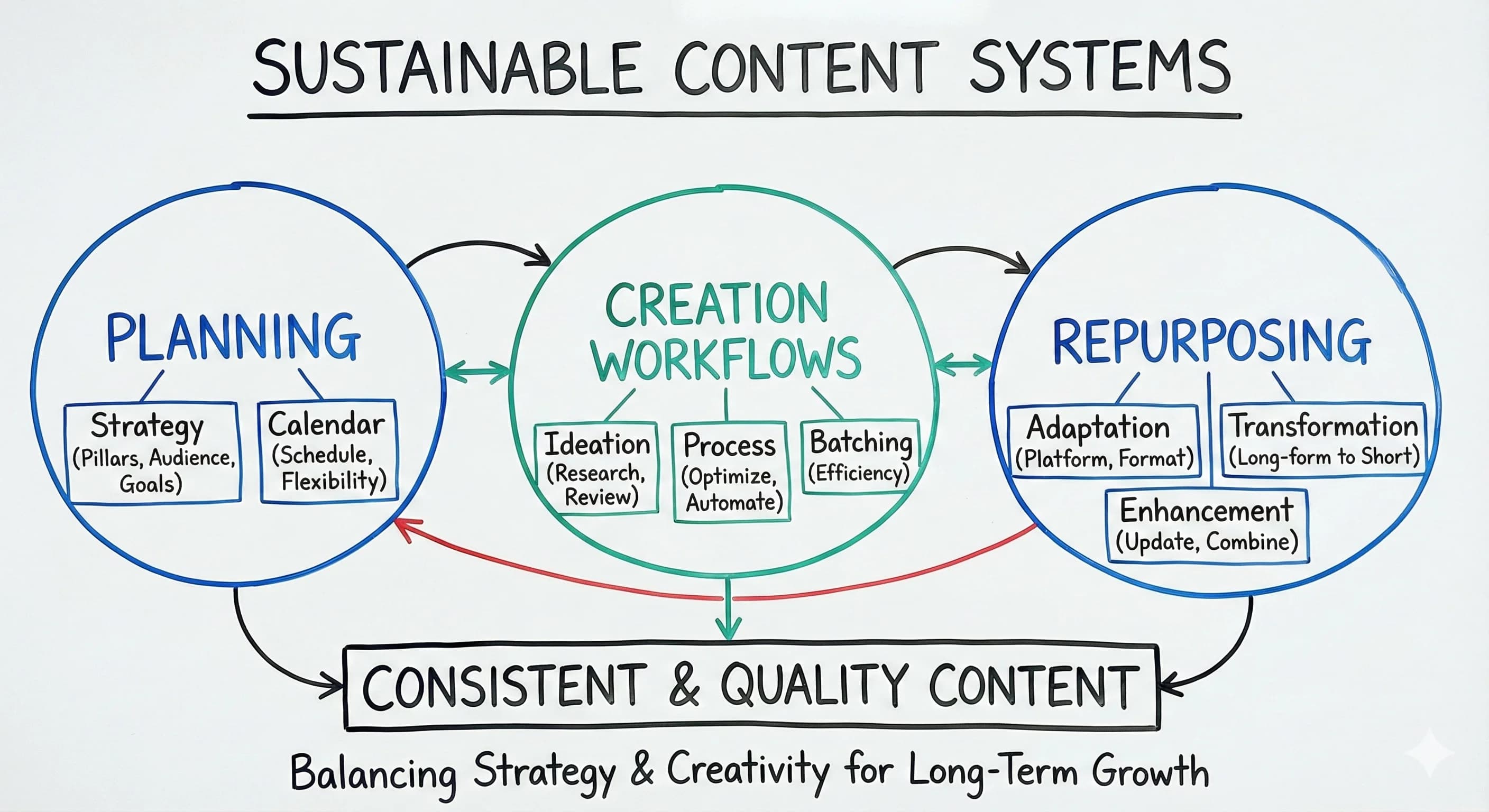Content Planning and Creation Workflow Guide: Build Sustainable Content Systems
Transform your content planning and creation with proven workflows, batching strategies, and repurposing techniques. Build sustainable content systems that ensure consistent publishing, reduce burnout, and maximize your content's reach across all platforms.
•20 min read


